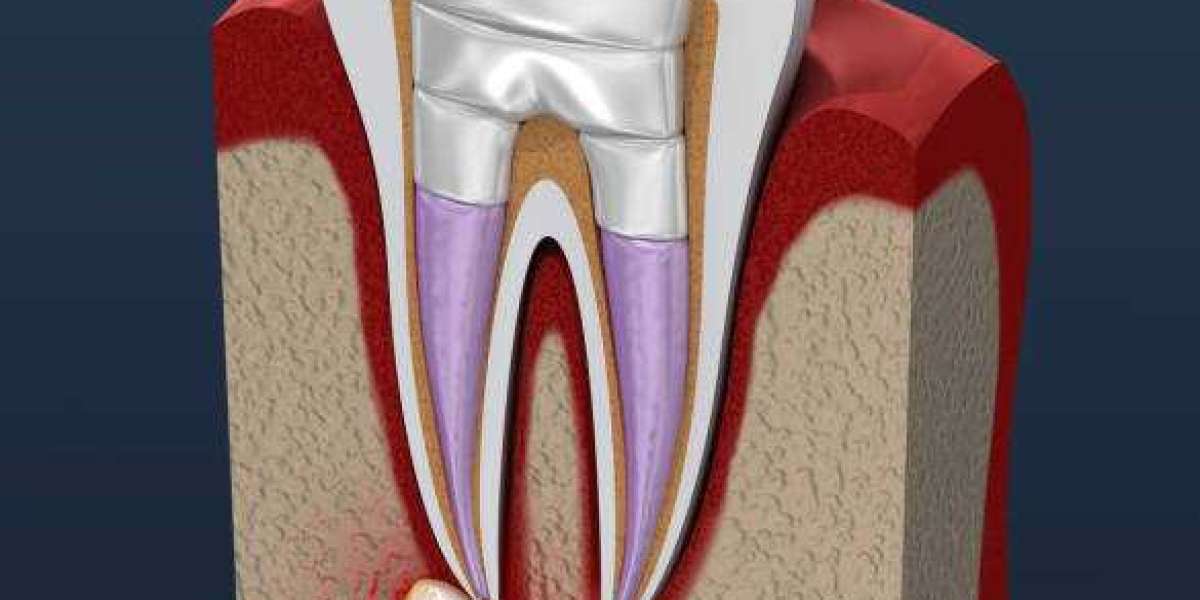Root canal treatment is often associated with fear and anxiety, but it's a crucial procedure for saving teeth that are severely damaged or infected. Thanks to modern dentistry,Root canal treatment in Islamabad are now more comfortable and effective than ever. In this blog, we’ll explore what root canal treatment entails, when it’s necessary, and how to care for your tooth afterward.
What Is a Root Canal?
A root canal is a dental procedure used to remove the infected or damaged pulp from the inside of a tooth. The pulp is the soft tissue within the tooth that contains nerves, blood vessels, and connective tissue. While the pulp is essential for the development of the tooth, it is not necessary for its function once the tooth has fully matured. When the pulp becomes infected or inflamed due to deep decay, cracks, or trauma, it can cause severe pain and may lead to an abscess if left untreated.
When Is a Root Canal Necessary?
Root canal treatment becomes necessary when the pulp of the tooth is damaged beyond repair. Several situations can lead to this:
Deep Tooth Decay: A cavity that has reached deep into the tooth can allow bacteria to infect the pulp.
Cracked or Chipped Teeth: Cracks or chips can expose the pulp, making it susceptible to infection.
Repeated Dental Procedures: Multiple treatments on the same tooth can irritate the pulp and eventually cause inflammation or infection.
Trauma or Injury: Even without visible cracks, trauma can cause the pulp to die, necessitating a root canal.
Signs You Might Need a Root Canal
While only a dentist can confirm if you need a root canal, certain symptoms may indicate the need for this procedure:
Severe Toothache: Persistent pain that worsens when you chew or apply pressure.
Prolonged Sensitivity: Sensitivity to hot or cold that lingers long after the stimulus is removed.
Swollen Gums: Swelling around the affected tooth, sometimes accompanied by a small pimple on the gum.
Tooth Discoloration: A tooth that becomes darkened due to pulp damage.
Tenderness or Swelling: Tenderness in the lymph nodes or nearby bone and gum tissues.
The Root Canal Procedure
Understanding the steps involved in a root canal can alleviate much of the anxiety surrounding it. Here’s a breakdown of what to expect:
Consultation and Diagnosis: Your dentist will first take an X-ray of the affected tooth to assess the extent of the damage and to determine whether a root canal is the best course of action.
Administering Anesthesia: Before beginning the procedure, the dentist will numb the area around the tooth with local anesthesia, ensuring you feel no pain during the treatment.
Accessing the Pulp: The dentist will make a small opening in the crown of the tooth to access the pulp chamber and root canals.
Removing the Infected Pulp: Specialized instruments are used to remove the infected or damaged pulp from the inside of the tooth.
Cleaning and Shaping: The dentist will then clean and shape the root canals, ensuring they are free of bacteria and debris.
Filling the Canals: After cleaning, the root canals are filled with a rubber-like material called gutta-percha. This seals the canals and prevents future infections.
Sealing the Tooth: The opening in the tooth is sealed with a temporary or permanent filling. In most cases, a crown will be placed on the tooth during a follow-up visit to restore its strength and function.
Aftercare and Recovery
After the procedure, it’s normal to experience some mild discomfort or sensitivity, but this usually subsides within a few days. Over-the-counter pain relievers can help manage any discomfort. To ensure a smooth recovery, follow these tips:
Avoid Chewing on the Treated Tooth: Until the tooth is fully restored with a crown, avoid chewing on the affected side to prevent damage.
Maintain Good Oral Hygiene: Continue to brush and floss regularly, paying extra attention to the treated tooth.
Attend Follow-Up Appointments: Your dentist will want to ensure that the tooth is healing properly and that the permanent crown fits correctly.
The Benefits of Root Canal Treatment
Root canal treatment offers several significant benefits:
Pain Relief: The primary goal of a root canal is to relieve the pain caused by an infected or inflamed tooth.
Preservation of Your Natural Tooth: A root canal allows you to keep your natural tooth, which is always preferable to extraction.
Restoration of Tooth Function: Once the root canal is complete and the tooth is restored with a crown, it will function just like any other tooth.
Prevention of Further Infection: By removing the source of infection, a root canal helps prevent the spread of bacteria to other teeth and gums.
Dispelling Common Myths
Despite the benefits, root canal treatment is often misunderstood. Let’s clear up some common myths:
Myth 1: Root Canals Are Painful: With modern dental techniques and anesthesia, root canals are no more painful than getting a filling. The procedure is designed to relieve pain, not cause it.
Myth 2: It’s Better to Extract the Tooth: While extraction may be necessary in some cases, preserving your natural tooth is usually the best option. A root canal allows you to keep your tooth and avoid the complications associated with missing teeth.
Myth 3: Root Canals Cause Illness: This myth is based on outdated and debunked theories. There is no scientific evidence to support the claim that root canals cause illness or disease in other parts of the body.
Conclusion
Root canal treatment is a safe and effective way to save a damaged or infected tooth. With advancements in dental technology, the procedure is relatively painless and offers long-term benefits, including pain relief, tooth preservation, and restored functionality. If you suspect you might need a root canal, consult your dentist as early intervention can prevent further complications and help you maintain a healthy, beautiful smile.








